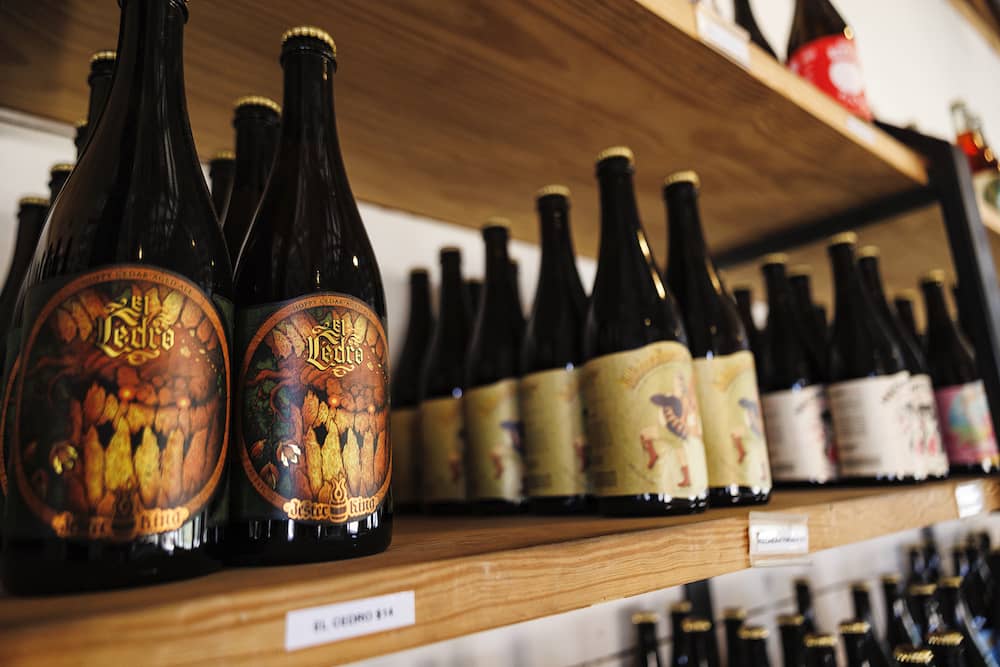Distillery in Galveston: Discover the Art of Craft Spirits
Wiki Article
The Ultimate Distillery Experience: From Grain to Glass, Every Little Thing You Need to Know
Embarking on a trip with the complexities of the distillery process introduces a world where scientific research meets creativity in the creation of spirits. From the careful choice of grains to the thorough crafting of each bottle, every action in the production line plays a critical role in shaping the final product that enhances our glasses.The Art of Grain Choice
Picking the optimal grains is a vital action in the distillation procedure, identifying the taste account and top quality of the end product. The kind of grain chosen substantially affects the character of the spirit being created - Breweries in Galveston Texas. Usual grains utilized in distillation consist of barley, corn, rye, and wheat, each imparting unique flavors and qualities to the final item
Beyond taste considerations, the quality and pureness of the grains are vital. Distillers thoroughly resource grains to guarantee they are without impurities and possess the essential starch material for fermentation. By grasping the art of grain choice, distillers lay the foundation for producing exceptional spirits that mesmerize the taste.
Purification Process Demystified
Having actually developed the structure with careful grain option, the purification procedure becomes the transformative phase where the significance of the picked grains is unlocked and refined into a perky type. Distillation is a systematic procedure that depends on the principle of dividing alcohol from a combination based on distinctions in boiling points. Once the fermented mash is warmed in the still, the alcohol vaporizes at a lower temperature level than water and various other substances, enabling its extraction. As the alcohol vapors rise and pass with the still, they condense back into fluid form, causing a higher evidence extract. This distillate, also called the 'heart cut,' is the purest and finest portion of the distillation run. The procedure doesn't finish there; several purification runs or extra steps such as aging in barrels might better fine-tune the spirit, enhancing its complexity, personality, and taste. Understanding the complexities of the distillation procedure is crucial for producing premium spirits that captivate fanatics and aficionados alike.Barrel Aging and Taste Advancement
During the barrel aging process, spirits go through a transformative journey as they connect with the timber, absorbing nuanced tastes and developing a rich intricacy. As spirits age in the barrels, they draw out substances such as vanillin, lignin, and tannins from the wood, contributing to the development of scents like vanilla, sugar, flavor, and even tips of toasted oak.Furthermore, the aging procedure permits for oxidation to happen, causing more chain reaction that mellow the spirit and round out any kind of rough edges. The permeable nature of wood likewise makes it possible for the spirit to breathe, facilitating the assimilation of flavors over time. Relying on the duration of aging and environmental conditions like temperature level and humidity, spirits can obtain various qualities, from refined timber notes to deep, complicated tastes that make each set distinct. Eventually, barrel aging plays a pivotal role in forming the unique preference profile of each spirit, supplying a sensorial journey for connoisseurs to enjoy.
Craftsmanship in Bottling and Classifying
As spirits reach their optimal taste accounts through barrel aging, the careful craftsmanship in identifying and bottling comes to be the next critical action in offering a premium product to customers. The procedure of bottling and labeling is an essential aspect of the general distillery experience, as it is the last touchpoint before the product reaches the hands of customers (Breweries in Galveston Texas). Craftsmanship in bottling includes making certain that each bottle is filled exactly with the spirit, taking into consideration elements such as uniformity in fill degrees and the avoidance of any impurities going into the container
Sampling and Valuing Great Spirits
To totally appreciate great spirits, one have to involve all the detects in a calculated and conscious tasting experience. When sampling fine spirits, it is necessary to start by observing the spirit's look. Swish the spirit in your mouth to fully experience its appearance and preference.Final Thought
Finally, the distillery experience encompasses the complex art of grain choice, the exact distillation procedure, the Galveston Whiskey transformative barrel aging, the thorough craftsmanship in labeling and bottling, and the innovative method of sampling and appreciating fine spirits. Each action in the production process plays a vital duty in creating high-grade spirits that mesmerize the detects and delight lovers worldwide.The kind of grain picked considerably affects the character of the spirit being produced. By grasping the art of grain option, distillers lay the foundation for producing exceptional spirits that mesmerize the taste.

Report this wiki page